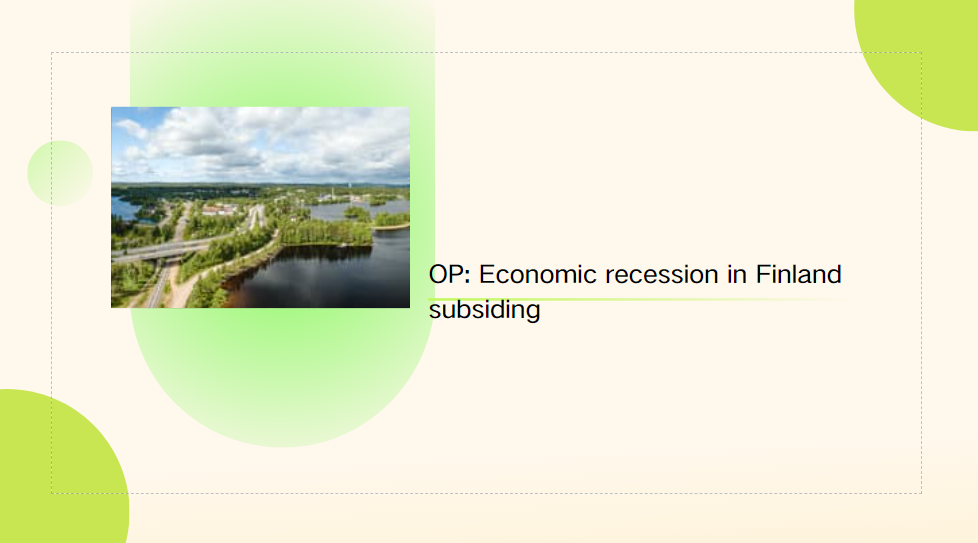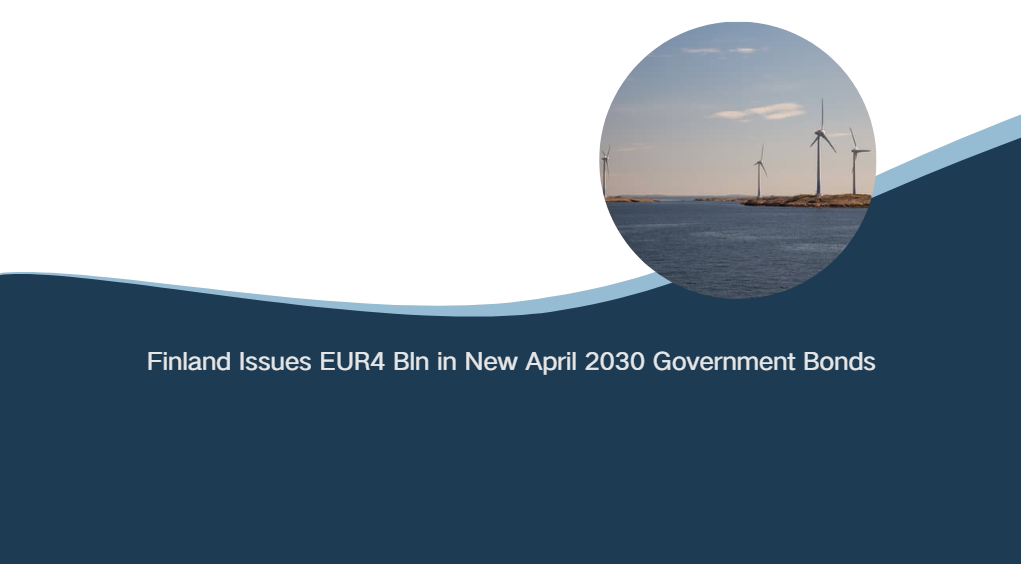Financial sector's capital position as at 30 June 2024: Sluggish economic growth and geopolitical tensions have maintained the financial sector's risks at a high level – capital position has remained strong
Despite the difficult cyclical conditions, the Finnish financial sector has coped well during the first half of the year. The banking sector's capital position remained strong in the first half of the year. Non-performing loans increased slightly both in household and corporate credit, but their levels are still among the lowest in Europe. In the insurance sector, too, solvency remained good. Early signs of positive developments in the economy are overshadowed, however, by many risks that are also affecting the financial sector. Geopolitical tensions, in particular, have risen to the fore in the early autumn.
There are tentative signs of a turn in the Finnish economy; GDP, for example, grew in the first half of the year compared with the previous quarters. Annualised GDP growth, however, is projected to continue to decline this year compared with 2023. Cyclical conditions remain weak overall, which is reflected as an increase in unemployment, lay-offs and bankruptcies. Confidence indicators have risen slightly, however, and the decline in inflation and loan reference rates is supporting the debt-servicing capacity of the financial sector's customers. The strengthening of market expectations for a cut in policy rates by central banks has boosted equity prices and lowered bond yields.
The early signs of positive developments in the economy and the outlook for inflation are, however, overshadowed by many risks.
“We have experienced several years of weak economic growth, but prospects finally seem to be slowly improving. The Finnish financial sector has coped well with the turbulent years, thanks to, among other things, its strong capital position and high-quality risk management. The operating environment is still marked by uncertainty, however. Particularly geopolitical risks are still a cause for concern. In addition to the direct war effects, they may push up prices and disrupt world trade. A materialisation of risks would further weaken the operating environment of Finland's financial sector,” says Tero Kurenmaa, Director General of the Financial Supervisory Authority (FIN-FSA).
Banking sector's capital position remained strong – credit risks vary between industries
The banking sector's capital position was supported by a solid financial performance. The sector's Common Equity Tier 1 (CET1) capital ratio at the end of June was 19.1% (12/2023: 18.3%) and the total capital ratio was 23.1% (12/2023: 22.1%). The improvement in the capital ratios compared with the reference year was due to growth in net interest income. Growth in net interest income halted at the end of 2023 and, in the first quarters of 2024, net interest income was eroded by lower interest income.
The banking sector's non-performing loans grew slightly, both in household and corporate credit. Growth was evident particularly in consumer credit and in certain industries that have suffered from the rise in interest rates and prices as well as the weaker business cycle, for example in construction and wholesale and retail trade. Movements of loans between the stages of impairment in corporate and household credit are also signalling an increase in credit risks.
The banking sector's liquidity situation has remained stable and the liquidity position is still strong. The share of market funding in Finnish banks’ funding remained high, despite the increase in the volume of deposits in the first half of the year.
Employee pension institutions’ solvency improved
The employee pension sector's solvency ratio strengthened as return on investment exceeded the required return on technical provisions. The employee pension sector's solvency ratio at the end of June was 128.5% (12/2023: 126.3%). Solvency capital increased by some EUR 3.5 billion. The sector's return on investment (5.3%) was generated mainly by equity investments. The return on real estate investments remained slightly negative. In the sector’s investment allocation, the share of equities increased to over 50%. The risk-based solvency position remained unchanged as the solvency capital requirement increased in parallel with solvency capital. Employee pension institutions’ stress resilience against equity shocks has weakened in recent years but is still reasonable.
Life insurance sector solvency remained virtually unchanged compared with the situation at the end of 2023
The life insurance sector’s solvency ratio was 233.8 %, i.e. at the same level as at the end of 2023 (12/2023: 234.6%). The rise in the risk-free yield curve decreased the amount of technical provisions and thus increased the amount of own funds. At the same time, the solvency capital requirement increased due to growth in equity risk, in particular.
Return on investment was 1.1% in the first half of 2024. The majority of the return on investment was generated by equity investments. Return on real estate investment was still slightly negative in January-June. Unit-linked assets grew by 7.2% from the situation at the end of the year 2023, taking into account net subscriptions and increase in value. These investments, in which the customer bears the investment risks, accounted for 78.2% of the sector's total investment assets. Premiums written on life insurance increased on the previous year, particularly due to a pick-up in the sales of endowment insurance policies. The amount of claims paid increased slightly compared with the previous year.
Non-life insurance sector solvency weakened but remained at a good level
The non-life insurance sector's solvency ratio at the end of June was 247.1%, i.e. it decreased compared with the situation at the end of 2023 (12/2023: 265.5%). Solvency was weakened by the increase in the solvency capital requirement, which was affected by the rise in the value of equity investments and the symmetric adjustment of the equity capital charge. The growth in insurance claims was reflected as an increase in the amount of technical provisions, despite the rise in the risk-free yield curve used in the calculation of technical provisions.
The non-life insurance sector's return on investment was 2.9% in the first half of 2024. The most of the return was generated by equity investments. The return on real estate investment remained low but positive. The slight growth in premiums written in non-life insurance was generated mainly from health insurance and motor liability insurance. Claims incurred rose notably. In addition to the increase in the amount of claims paid in health insurance, the claims ratio was weakened by major losses in the winter and the challenging weather conditions.























































First, please LoginComment After ~